Fishes
Media
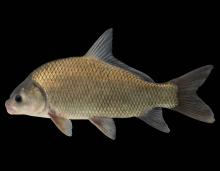
Species Types
Scientific Name
Ictiobus bulbalus
Description
The smallmouth buffalo is nearly as common and widespread in Missouri as the bigmouth buffalo. Identify it by its small, nearly horizontal mouth and the strongly keeled forward part of its back.
Media
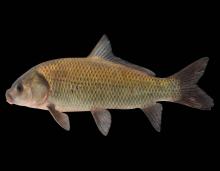
Species Types
Scientific Name
Ictiobus niger
Description
Compared to Missouri’s other buffalofishes, the black buffalo is less abundant and widespread, and of the three, it occurs most often in places with strong currents.
Media
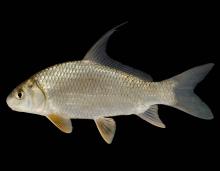
Species Types
Scientific Name
Carpiodes cyprinus
Description
Like our other carpsuckers, the quillback has a deep, rather thick body and a long, sickle-shaped dorsal fin. This silvery, hump-backed fish is widely distributed in Missouri.
Media
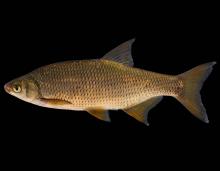
Species Types
Scientific Name
Notemigonus crysoleucas
Description
The golden shiner is a deep-bodied minnow with a greenish-olive back and a faint dusky stripe along the midline. It has a fleshy keel along the midline of the belly. It is widespread in Missouri.
Media
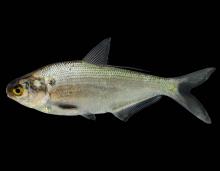
Species Types
Scientific Name
Dorosoma cepedianum
Description
The gizzard shad is one of the most common and abundant fish in Missouri. In Missouri, this schooling fish occurs in every major stream system and is most abundant in reservoirs and large rivers.
Media

Species Types
Scientific Name
Dorosoma petenense
Description
The threadfin shad occurs in the Mississippi River and its tributaries. It also occurs in mainstem reservoirs of the White River Basin and in Montrose Lake and the South Grand River in Henry County.
Media

Species Types
Scientific Name
Hiodon tergisus
Description
Mooneyes are silvery, flat-sided fishes with large eyes and prominent teeth on the jaws, roof of the mouth, and tongue. A fleshy keel runs along the midline of the belly. The eye is silvery and larger than the goldeye’s.
Media
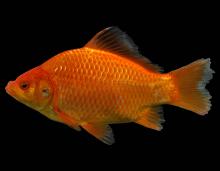
Species Types
Scientific Name
Carassius auratus
Description
Goldfish are not native to North America. They often escape into the wild from bait buckets and other causes, but there are few self-sustaining populations in Missouri.
Media

Species Types
Scientific Name
Ctenopharyngodon idella
Description
Grass carp are large-bodied with a broad head and a terminal transverse mouth. The scales appear crosshatched. A native of east Asia, it is now widely distributed in the Missouri, Mississippi, and St. Francis rivers and in impoundments.
Media
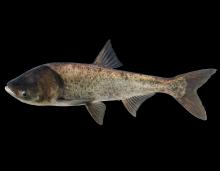
Species Types
Scientific Name
Hypophthalmichthys nobilis
Description
The bighead carp is an invasive Asian carp. It does not jump as frequently as its cousin the silver carp, but it also leaps from the water when disturbed, threatening boaters' safety.
See Also


Media

Species Types
Scientific Name
Amphiuma tridactylum
Description
The three-toed amphiuma is an eel-like, completely aquatic salamander. It has very small forelimbs and hind limbs, each with three tiny toes. In Missouri it’s found only in the Bootheel region.
Media

Species Types
Scientific Name
Siren intermedia nettingi
Description
The western lesser siren is an eel-like, aquatic salamander with external gills, small eyes, small forelimbs with four toes, and no hind limbs. In Missouri, it’s found mostly in the Bootheel and northward in counties near the Mississippi River.
About Fishes in Missouri
Missouri has more than 200 kinds of fish, more than are found in most neighboring states. Fishes live in water, breathe with gills, and have fins instead of legs. Most are covered with scales. Most fish in Missouri “look” like fish and could never be confused with anything else. True, lampreys and eels have snakelike bodies — but they also have fins and smooth, slimy skin, which snakes do not.





















